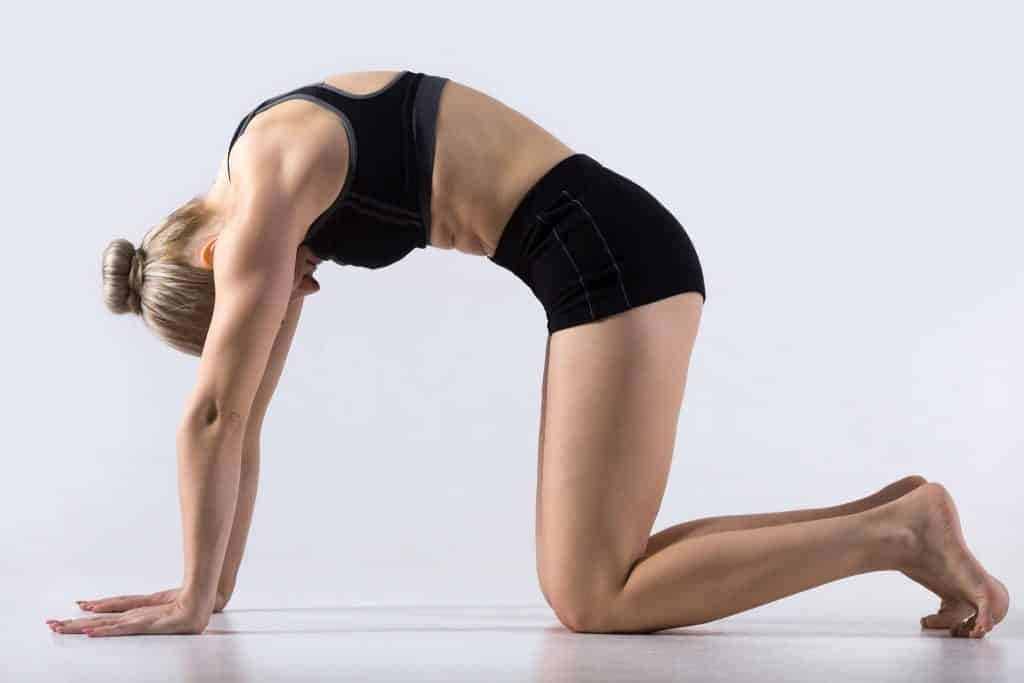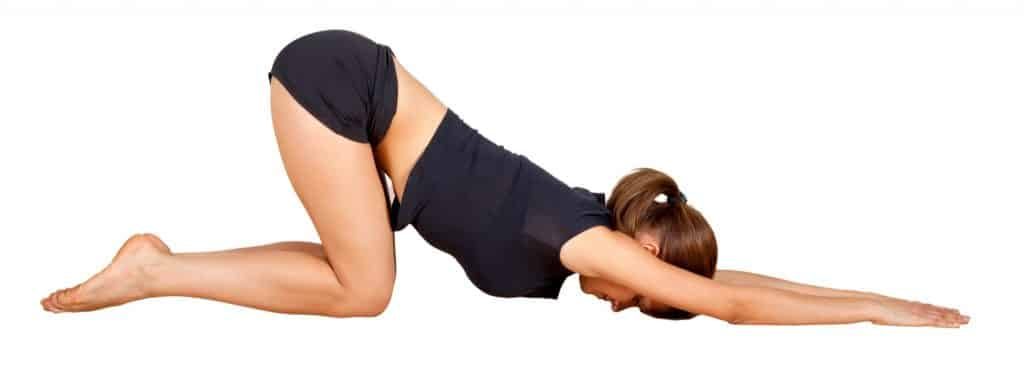Back pain is extremely common and the causes can be difficult to diagnose. Some major factors in today’s society include an increased obesity level in the Western world and the impact of the digital age, with people hunching over their desks at work or at home on their computer or smartphone. The good news is, there are ways to decrease and rid yourself of chronic or temporary back pain, by improving your posture and strengthening your back. And yoga is one of the best tools around to tackle the problem…

Causes Of Back Pain
There are a number of potential causes of back pain, and it is, unfortunately, a common issue. The back is a complex structure, made of bones, muscles, nerves and joints, which can make it difficult to pinpoint specific causes. Back pain may be a symptom of a muscle or ligament strain, which can be caused by repeated heavy lifting or a sudden movement that jolts a muscle or ligament in a way it shouldn’t. It might be caused by bending over for long periods, lifting, carrying, pushing or pulling heavy items, sporting injuries from overusing muscles, or sitting hunched over a desk or computer all day.
There are certain factors that can make some people more at risk than others of chronic back pain. Being overweight can put pressure on the spine, which can cause back pain, especially if you don’t have a strong core or strong back muscles to support the weight. Smoking may also cause problems if it leads to tissue damage, linked to an unhealthier lifestyle than the average non-smoker. The extra weight of carrying a baby around while pregnant places additional strain on the back, which can also cause back pain. Often this subsides after childbirth, but it can sometimes linger as a chronic problem in the long-term. Even being stressed or depressed can cause back pain, although it is not entirely understood scientifically how the two are related. The theory is that psychological and emotional factors cause some sort of physical change in the body that results in back pain.
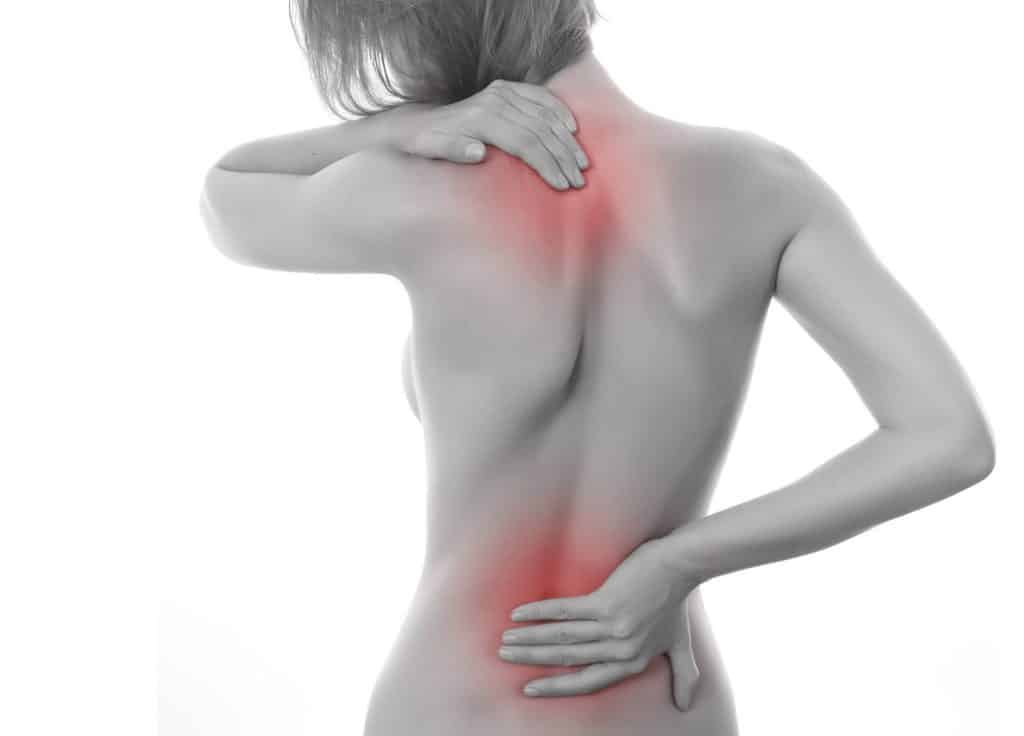
Causes Of Lower Back Pain
The lower back is particularly susceptible to weakness, pain and injuries. Mechanically speaking, this area is subjected to a lot of stress and strain, because it holds the weight of the upper body. The lower back is he bottom part of your spine, which is made up of more than 30 bones called vertebrae. These little bones are stacked on top of each other, separated with a disc between each bone, which is a spongy piece of cartilage. This acts as a shock absorber to stop the vertebrae from grinding on top of each other. However, these protective ‘sponges’ can wear away with age, which leads to degenerative disc disease. They can also tear and weaken, which can lead to a ‘slipped disc’ or ‘ruptured disc’. In this case, the center of the disc may bulge, which can cause it to press on sensitive nerves that are connected to the brain, resulting in excruciating pain. In some cases, a slipped disc in the lower back can put pressure on nerves that run down the spinal column, causing pain all the way down the buttocks and leg, which is called sciatica.

There are a number of potential causes of lower back pain, including discs tearing, vertebral fractures caused by osteoporosis; spinal stenosis, which is usually caused by bone spurs as a result of osteoporosis; and scoliosis, which is an abnormal curvature of the spine. In some cases, lower back pain can be caused by diabetes or a pinched nerve. The cause of lower back pain can be difficult to diagnose for doctors, and it can be genetic.
How Posture Effects Back Pain
Maintaining an accurate, healthy posture helps your spine stay strong and stable. When you slouch or sit hunched over your desk at work, the muscles and ligaments in your back have to strain to keep you balanced, which can lead to back pain, and sometimes chronic back pain. Your back should have three natural, subtle curves – an inward or forward curve at the neck; an outward or backward curve around the upper back; and an inward curve around the lower back.
If you experience pain in your back, it could be the result of poor posture, and might be easily fixed if you spend some time training your body to stand and sit in a healthier position.
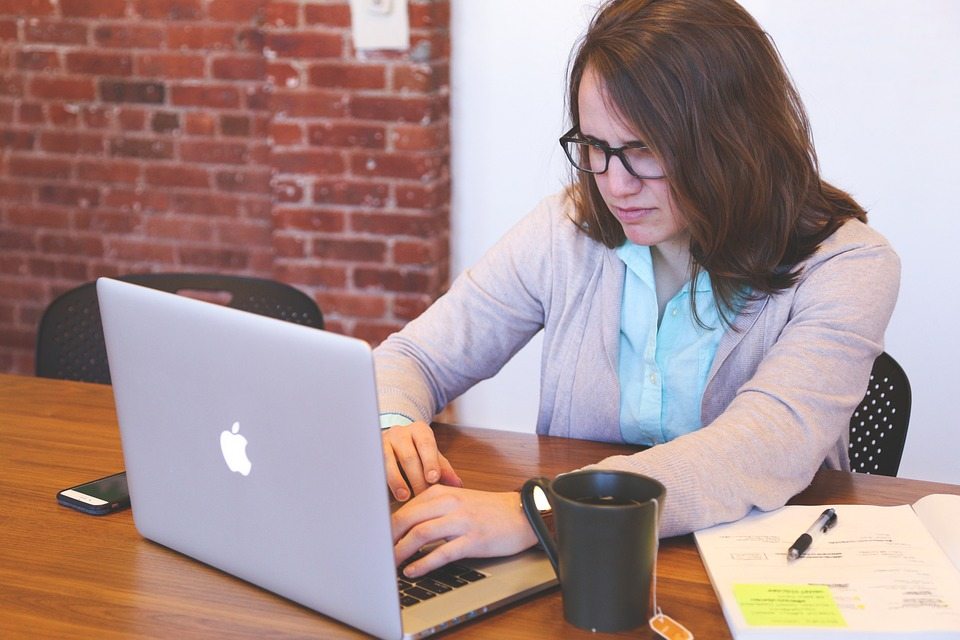
Benefits Of Yoga For Back Pain
If you already suffer from back pain or a back injury, be sure to consult your doctor before practicing any yoga or exercise, whether at home or at a studio or fitness center.
Yoga can be extremely beneficial to people suffering from back pain or a weak back because it strengthens muscles in the back and core that protect and support the spine. It also improves posture, which takes pressure off the spine. If you already suffer from back pain, there are certain poses that are particularly beneficial in helping ease the pain, as well as strengthening the back and core muscles, and improving posture, to prevent or minimize the risk of future pain or injuries…
Cat-Cow Sequence
This is a good one to start with because it slowly and gently warms up and stretches the back and abs, loosening any tightness in the muscles.
Start in tabletop position on your mat. If your knees are sensitive, you can put a blanket or extra mat underneath them. Make sure your knees are directly underneath your hips, and hip-distant apart, and your hands are directly underneath your shoulders, shoulder-distance apart.
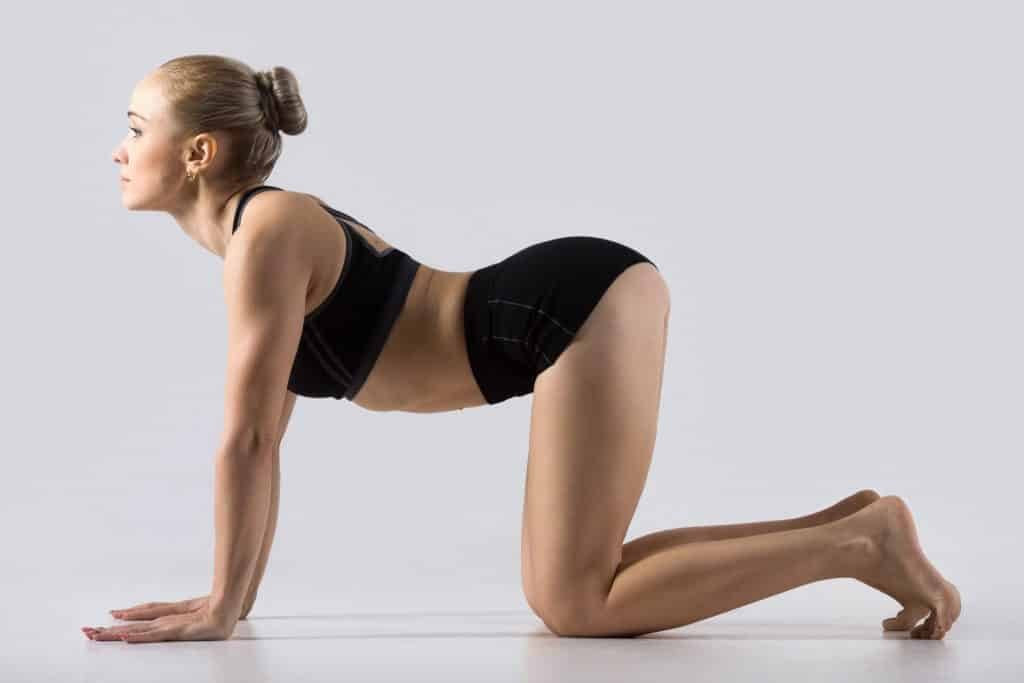
On an inhale, drop the belly down, arching the back and lifting your tailbone towards the sky. If you feel comfortable and balanced, you can also raise your face towards the sky, looking upwards to deepen the stretch. On an exhale, round the back, dropping the head and tailbone towards the ground. Repeat with your own breath for at least 5 breaths.
Wide-Legged Forward Bend
This pose decompresses the spine, so it is a beneficial one to practice if you have a tight back. Have a yoga block in front of you, in case you need it. Start standing up with your legs wide in an upside-down ‘V’ shape, toes very slightly turned in towards each other, heels turned slightly out. Place your hands on your hips and lift your collarbone and chest upwards to lengthen your torso on an inhale. As you exhale, slowly fold forward, keeping your core strong and engaged, and your back straight. Once you are halfway down, release your hands from your hips and place them either on the firm block in front of you, or directly onto the mat. Keep your core and back strong and on each exhale, try to fold a little deeper, moving the crown of your head towards the ground.
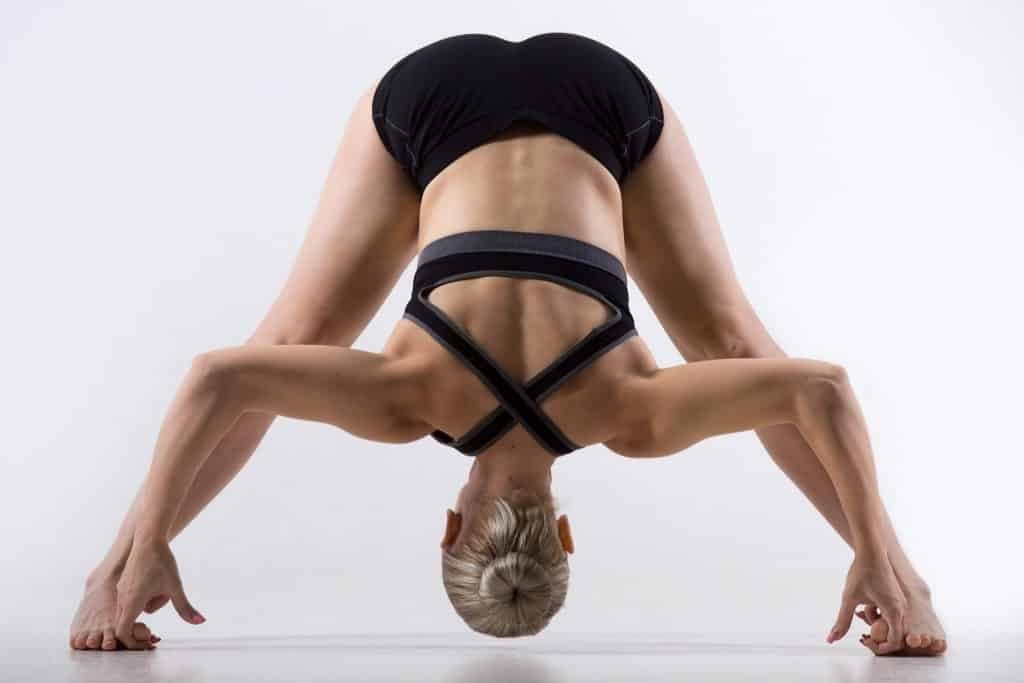
Sphinx Pose
If you want to strengthen your back muscles, this is the perfect pose to start with. It uses your back muscles to lift your upper body, essentially working those back muscles in the way you work your abdominal muscles during crunches or sit-ups.
Start lying flat on your belly and then place your lower arms (elbows to hands) by your sides on the mat. Your elbows should be in nice and tight next to your shoulders. Try to lengthen your tailbone towards your heels and rotate your thighs outwards toward the mat, broadening the lower back. Use your back to lift your body upwards, straightening your upper arms. You shouldn’t put too much weight on your hands to lift up – they are just there to guide and support the pose. You can either hold the pose for a few breaths, or practice it dynamically by lifting up on an inhale and gently releasing it on an exhale for a few rounds of breath.

Locust Pose/Bow Pose
If you are comfortable with sphinx, these are also back strengthening poses that are a bit more challenging. Locust pose is the next pose to move into and then if you master that, you can try bow pose, which requires a bit more flexibility along the entire body and is fantastic for posture.
For locust pose, start on your belly, with your hands either where they were for sphinx pose, or stretched out in front of you, or stretched back towards your legs. Exhale as much air out of your lungs as you can, and then on a deep inhale, lift your arms, upper body and legs up off the mat. The more you can lift up, the better, but don’t jerk or strain your back to do this. Take it nice and slow and lift a little higher on each inhale. You can rock forward and back to assist in the lift. Try to stay here for at least 3 long breaths.
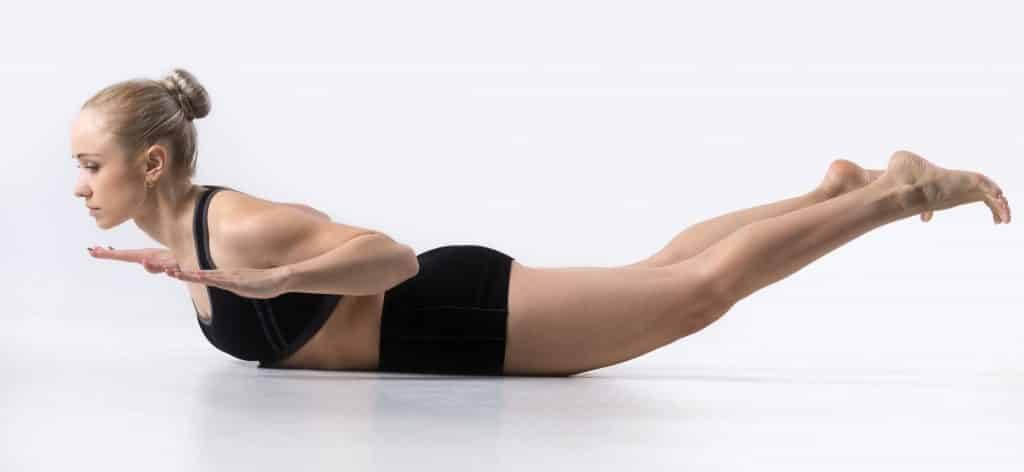
For bow pose, start on your belly again and take hold of your ankles. Make sure your knees are not wider than hip-distance apart and when you lift, keep checking that they do not drift outwards. On an inhale, lift your head, chest and thighs up off the mat. Again you can gently rock front to back and try to lift a little more off the mat with every inhale, remembering to breathe as you hold the pose.
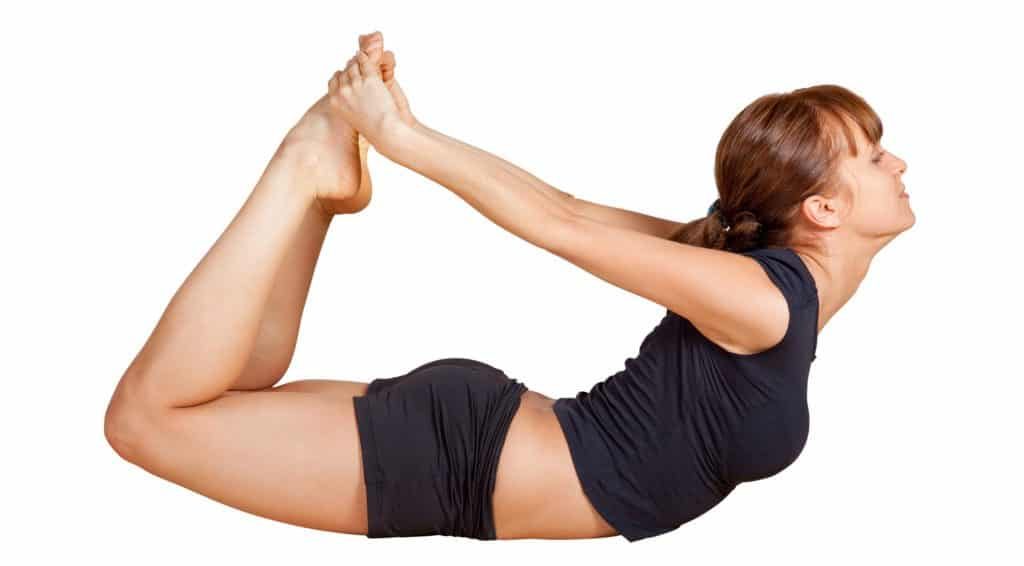
Child’s Pose
You should always practice child’s pose after locust or bow pose, because it releases the tightness in the back and relaxes the muscles, decompressing the spine. This is a very restorative pose that is great for relieving the back and neck.
Start in tabletop position with your wrists underneath your shoulders and knees underneath your hips. As you exhale, sit back onto your heels. Your torso should rest on your thighs, or in between them for wide-angle child’s pose. Make sure your arms are stretched out in front of you to create more space along the back and sides of your body and rest your forehead on the mat. You should feel a nice stretch along your back and between your shoulder blades. Stay here for a few breaths, allowing yourself to relax into the pose. You can then send your arms backwards, either side of your body to rest and relax your shoulders.

Extended Puppy Pose
This pose works the back muscles and spine while opening and stretching the hip muscles, psoas and sacrum at the same time, which ultimately helps support a strong, healthy back. It increases blood flow to the head and opens up blockages, increasing blood flow to the back. Extended puppy pose is a cross between child’s pose and downward facing dog.
Start in tabletop position again and then walk your hands forward, keeping your tailbone pointing up towards the sky. When you feel a stretch along your back and arms, you have gone far enough and you can rest in the pose for a few breaths. There should be a slight curve in your lower back. As you inhale, imagine the oxygen moving along your spine and torso, into your abdomen.
Bridge Pose
This is a particularly beneficial restorative yoga pose for the back – especially the lower back. Besides helping to strengthen lower back muscles, it encourages good posture and core control, as well as forcing the pelvis to practice balance, which supports the back. There are a few variations for this pose, depending on whether you are trying to strengthen the back, stretch the front of the body after practicing core work, or practicing a therapeutic pose for back pain.
Start lying on your back with your knees bent and feet planted on the ground, hip-distance apart. Make sure you can brush your heels with your fingertips. On an inhale, slowly and carefully lift your pelvis and lower back up towards the ceiling, pressing your hands into the mat. If you feel comfortable, you can lift yourself up higher, lifting your middle and upper back and tucking your shoulders underneath you, squeezing the shoulder blades together. Lift your collarbone towards the ceiling and clasp your hands underneath you or place your elbows on the ground and hands on your hips. Stay in this pose for at least 5 long, slow breaths, watching as your belly rises on an inhale and falls on an exhale.

Plow Pose
This pose stretches the shoulders and back while stimulating digestion, improving oxygen flow to the lungs and reducing blood pressure. However, it can strain the back of your neck, so if your back pain is around the shoulders or neck area, you should consult your doctor or a yoga therapist or physiotherapist before practicing this pose. Similarly, it is quite a difficult pose, depending on individual flexibility and weight, so it’s important to only push yourself to a comfortable stretch – never force your feet to the ground.

If you do have serious back problems, a great alternative to this pose is simply lying on your back and hugging your knees into your chest, stretching along the back. If you do have a tight back that would benefit from plow pose, start on your back with your arms by your sides, hands pressed into the mat. Tighten your core and, on an inhale, lift your legs, lower back and middle back up towards the ceiling, catching your back with your hands firmly to support yourself. This is a shoulder stand, and, again, it may be enough for you. If not, you can move your legs over your head, slow and controlled, keeping your core strong and back straight to protect your spine. Keep moving your feet back until you feel a good stretch in the back and stay in that position for a few breaths – your feet may or may not reach the floor. When moving out of plow pose or shoulder stand, keep your core strong and engaged and move down slowly without rolling back down onto your back. Place your hands back onto the mat and slowly move one vertebrae of your back onto the mat at a time.
Universal Spinal Twist
This is another relaxing, restorative pose that reduces stiffness in the lower back and releases tension along the spine.
Start lying on your back with your arms out wide, palms facing up. Bend one knee, and slowly fold it over the other leg, allowing gravity to gently pull it down towards the ground. Make sure both shoulders stay connected with the mat, and turn your gaze in the opposite direction of your bent knee. Relax into the pose and feel the stretch along the side of your body and your lower back. Stay here for at least 5 breaths and then repeat on the other side.
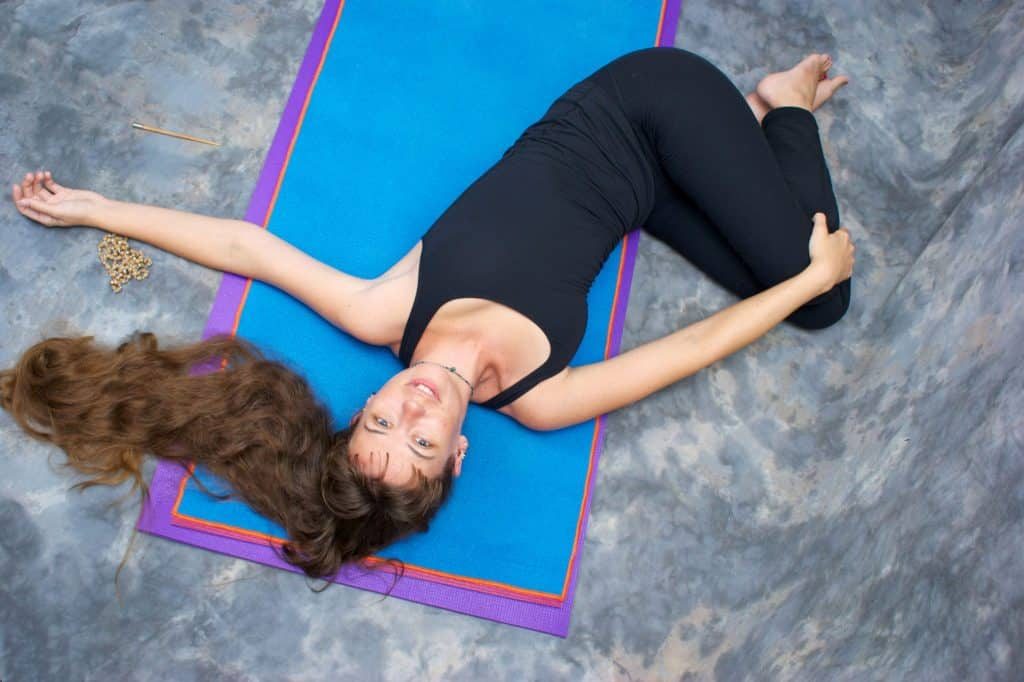
If it’s your lower back that is causing you pain or discomfort, try this video sequence of yoga poses specifically targeted to the lower back…
And if it’s your upper back, neck or shoulders that give you the most grief (especially for people who work at a desk all day), try this video sequence specifically targeted to those areas…




